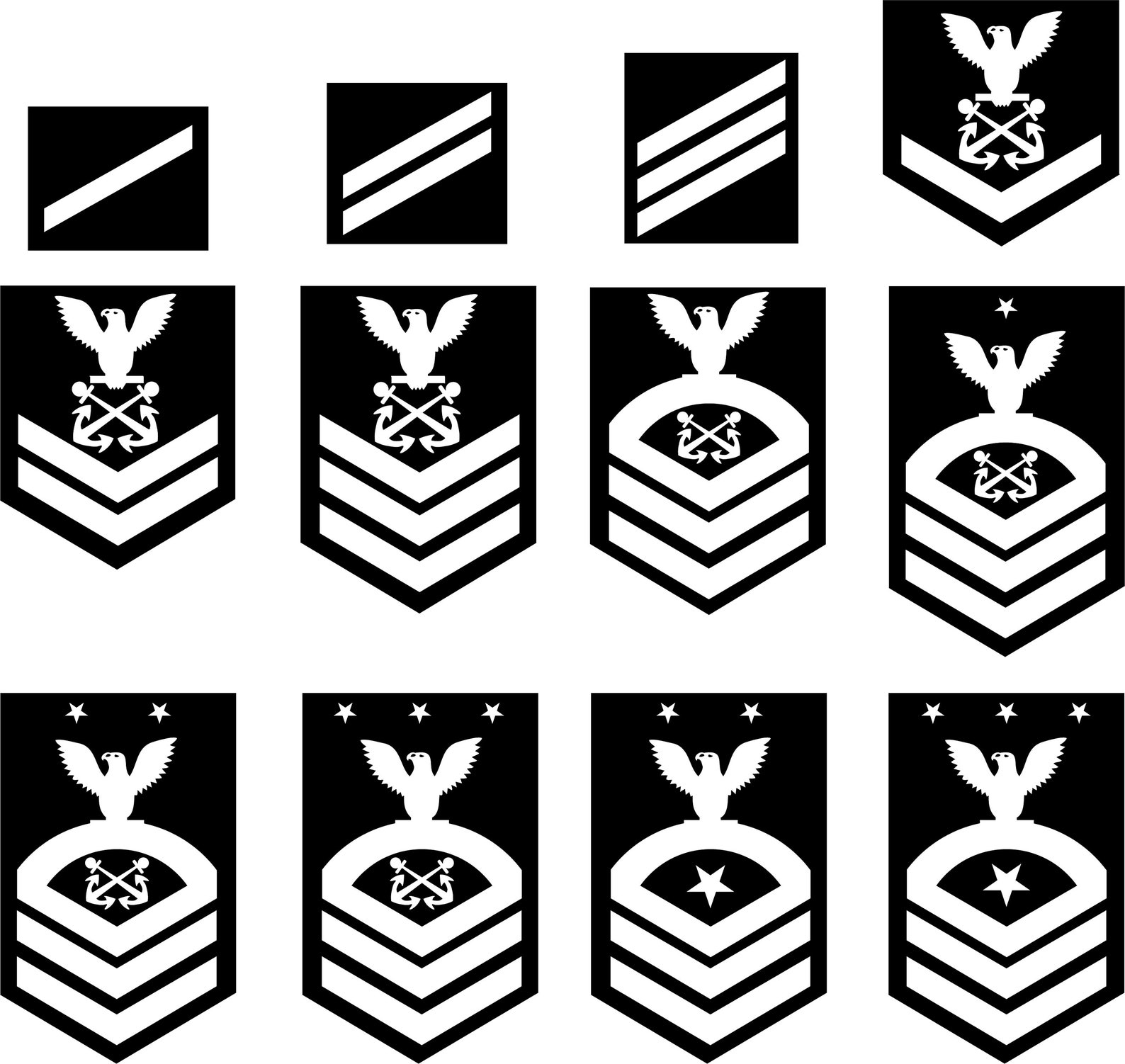

The Chief Petty Officer is considered the “ground level” leader of the Navy. Some responsibilities consist of managing more significant resources, such as expensive technical equipment, repair shop personnel, and large duty sections. The E6 has a leadership part in a Division team, a smaller group within a Department that includes 5-50 sailors (For example, Work Center Supervisor.) They delegate tasks and handle the most complex tasks. Petty Officer 1st Class is considered a high-grade Petty Officer. Leadership skills improve with years of experience, and those who are selected for C-School obtain technical expertise at their rate, much like studying for certification.
#US NAVY ENLISTED RANKS PROFESSIONAL#
2nd Class Petty Officers mentor junior Seamen to ensure work performance, professional development, and training.

They are supposed to be self-reliant leaders and do not need much oversight from their seniors. The E5 is considered a mid-grade Petty Officer. Collateral Duties can either be service-related or specialized duties (for example, command career counselor, command equal opportunity coordinator,…) Petty Officer 2nd Class (E-5) Qualifying for extra-duty assignments above the standard job specifications, called Collateral Duties, are the key to progressing in their career. E4s should be self-sufficient leaders and begin mentoring junior sailors.

The E4 maintains regular labor duties, but much of what is learned in training now shifts into leadership roles. Sailors who reach junior Petty Officer have made it to the Fleet. Their competency around the ship means more job responsibilities including essential maintenance and watchstanding.

Seaman is the third-lowest enlisted rank before the promotable Petty Officer. Promotion will come when the sailor has completed six months of service (determined by job performance and standing record of exemplary service.) Seaman (E-3) While it provides opportunities for Seamen Recruits to receive training and experience in a particular occupational field as they progress through their Navy careers, E2 is still considered a junior-enlisted rank, and the role is similar to that of the E1. Once a rate is assigned, a Seaman recruit becomes a Seaman Apprentice. Seaman Apprentice (E-2) Navy Ranks – Seaman Apprentice (E-2) The rating assignment further breaks down into specialty subcategories, such as Machinist’s Mate (MM), Sonar Technician (ST), or Hospital Corpsman (HN). The E1 should expect to obtain an occupational field, otherwise known as a rate, which falls under five main categories: Seamen, Firemen, Constructionmen, Airmen, or Hospitalmen. Seaman Recruit (E-1)Į1 is the first enlisted rank upon joining the Navy and is known as an “apprentice in training.” In basic training, they immerse themselves in the military culture, learning fundamental skills needed for their future career in the Navy. Let’s get started with our ASVAB practice test 2023 and make your goal a reality!Įnlisted sailors are divided into three categories: Apprenticeships (E-1 through E-3), non-commissioned Petty Officers (E-4 through E-6), and senior non-commissioned Chief Petty Officers (E-7 through E-9). Then what are the Navy ranks in order? If you want to serve your country by joining the Navy, read this blog post to learn more about what it’s like before you commit. They also help those who qualify with their education. The Navy Corps offers a v ariety of career opportunities in both active duty and reserves. Navy Corps officers are responsible for the administration, operation, and protection of Navy property. It is critical to remember your job responsibilities as well as your leadership responsibilities. The letter and number represent the Seaman’s rank title and pay grade. Enlisted (E-1 through E-9), Warrant Officer (CWO-1 through CWO-5), Commissioned Officers (CO-1 through CO-5), and Admiral ranks comprise the United States Navy Ranks (CO-6 through CO-10).


 0 kommentar(er)
0 kommentar(er)
